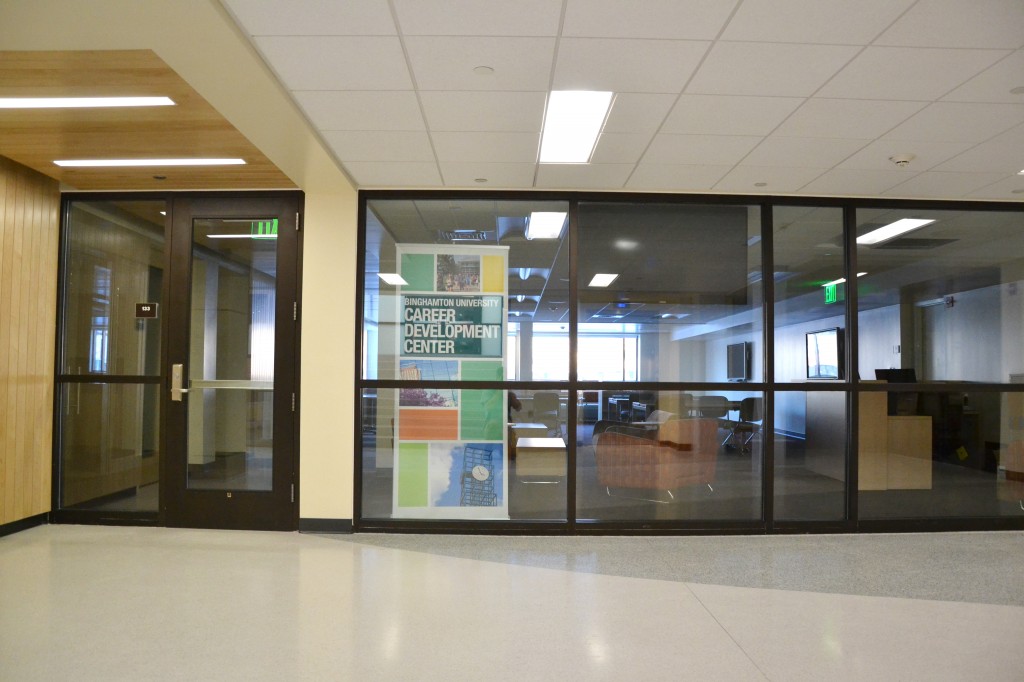
Beginning Saturday, the office space in the New Union Atrium will start to be filled with Student Support Services (SSS). These offices, previously scattered in locations around campus, will find a permanent home together in the recently built space.
The centerpiece of the new suite of offices is its technological capabilities. Administrators called the additions “state of the art.” According to Andrew Tucci, the director of education communications and the audiovisual designer for campus, some of the components in the Career Development Center (CDC) work room are only three months old, and didn’t start to ship until December.
The CDC will be the first office to begin moving into the new space, and is advertising the technology as a means of helping students reach out to employers and improve their job prospects.
The offices, which will be ready to use on Monday, March 17, will feature eight rooms with built-in Skype capabilities and 10 employer interview rooms, as well as a 12-seat conference room with video conferencing capabilities. The idea is that these additions will make it easier for students to get interviews, which will ultimately lead to employment.
“We have been able to add high end conference and educational space as well as technological features that will support remote interviewing and informational programs with Binghamton alumni across the world,” wrote Brian Rose, the vice president for student affairs, in an email.
Other new technology in the office spaces includes interactive smart boards and touch screens as well a live broadcast room that will enable users to watch video in real time and comment and ask questions through text windows.
“These spaces represent a new technological culture in higher learning, where students are the users of in-room learning technology, instead of the audience,” Tucci wrote.
According to Tucci, the space was designed with “flexibility” in mind. This flexibility comes in part with having brand-new gadgets to help students. Designers also hoped to create a more flexible space by grouping like student services together to foster collaboration and efficiency.
According to Rose, TRiO, Educational Opportunity Program (EOP), the Undergraduate Research Center, the post office and the Information Desk will all be in the new offices so that students can get similar help in the same place.
“One of the services that students and parents have been telling us they would like to be strengthened and more visible is the career services area,” Rose wrote. “We will now have very attractive space for the career center in a great location that will work well together with other union spaces from the Marketplace to meeting and conference rooms.”
Rose also wrote that moving some of these services to a more centralized location will relieve pressure on crowded areas of campus like the College-in-the-Woods Commons, where the Undergraduate Research Center previously was housed and had to share space with many other programs. By physically consolidating EOP and SSS tutoring, he said students will have more space dedicated specifically to these services.
Vice President for Administration James Van Voorst agreed that moving similarly oriented offices will benefit students and enable collaboration.
“Not only will the space be newer and fresher, but a number of offices that were spread in various areas throughout the campus will be in close proximity for students and staff resulting in overall improvement to everyone,” Van Voorst wrote in an email. “I think the manner that the spaces were designed, involving stakeholders from the initial phases, resulted in an extremely functional layout and efficiently designed areas.”


